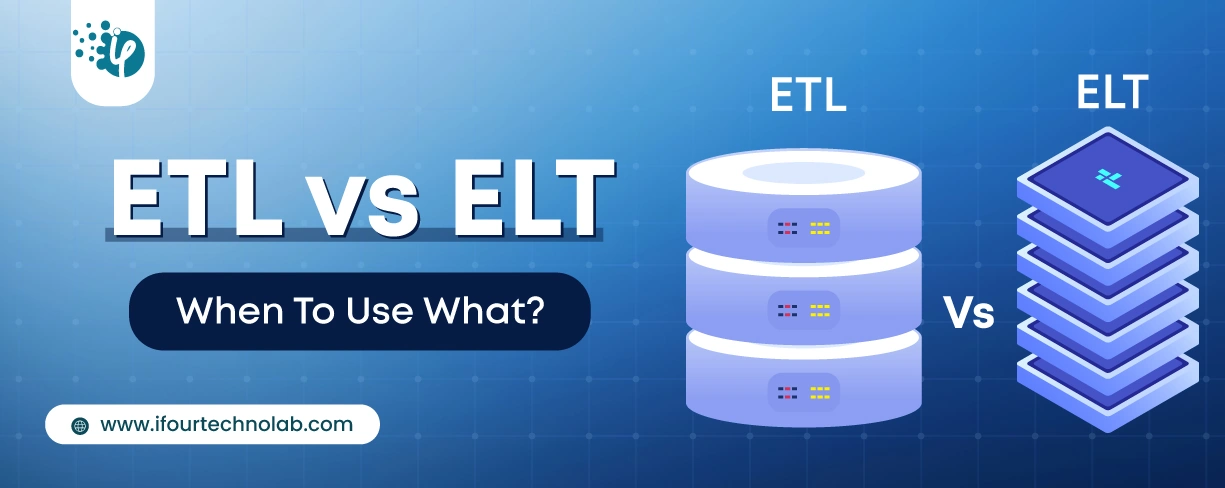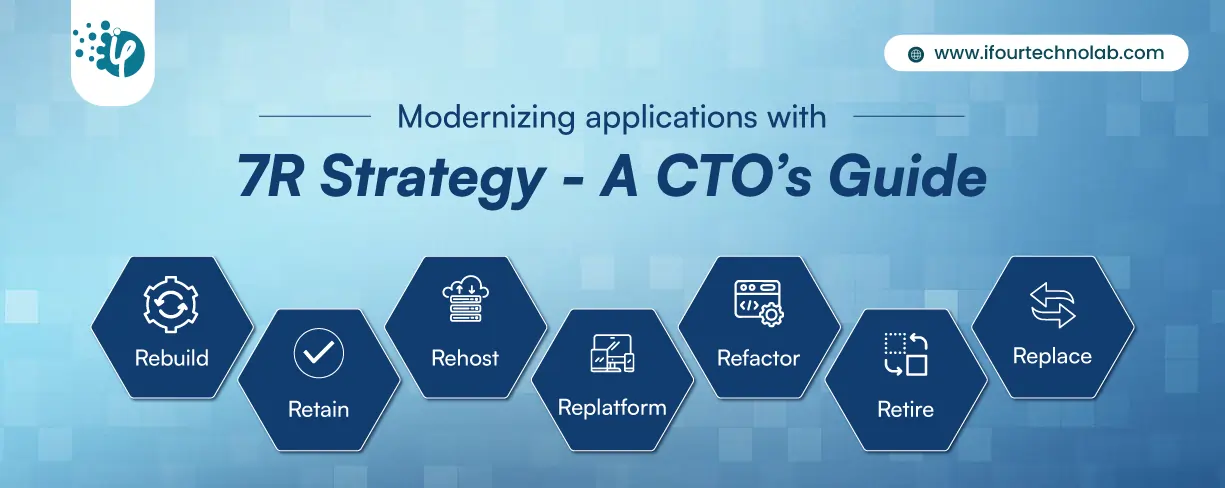How to Do Forecasting in Power BI (Steps & Accuracy Metrics)
Remember our last guide - Power BI forecasting? It revealed things that truly blocks accuracy, both structural and situational. Now it's time to take the next step. Knowing Power...
Listening is fun too.
Straighten your back and cherish with coffee - PLAY !

We are in the world of Bespoke software development where technologies come and go with lightning speed. With new libraries and frameworks popping up every day, it's difficult to keep track of what's hot and what's not. Despite this, one name has managed to remain at the top i.e., React.js.
React.js made its inception in 2013. And since then, it consistently remained a prominent front-end development platform in the list.
Today, it continues to be a go-to choice for both beginners and developers, and despite the emergence of new technologies, companies tend to hire React.js developers for their business needs.
In this article, we'll discuss the key reasons why React.js is still so popular in 2023. So, fasten your seatbelts, and let's explore what makes React.js a force to be reckoned with!
React has been consistently popular since its release in 2013 and genuinely dominates the web development sphere. Moreover, it has a strong community of developers who continue to use and contribute to the framework.
Look at the following statistics that illustrate React’s popularity.
ReactJS is used by many large companies, including Facebook, Instagram, Netflix, and Airbnb. According to BuiltWith, as of September 2021, React is used by over 1.8 million websites and is the most popular JavaScript library.
Planning to hire dedicated .NET developer for your project?
According to a Statista survey, React.js was the most in-demand web framework in 2022 and is the favored pick of about 40.41% of software professionals worldwide.
Because ReactJS is so extensively utilized, there is a significant need for ReactJS developers. The average income for a ReactJS developer in the United States is $97,000 per year, according to Glassdoor.
React is highly flexible and can be used for a variety of applications, from web and mobile apps to complex user interfaces and progressive web applications.
React framework is known for its flexibility because of its component-based architecture, which allows developers to create reusable UI components that can be used across different parts of the application. Just because modifications to specific components do not affect the remainder of the program, this modular approach makes it easier to maintain and upgrade applications.
Additionally, React's flexibility is evident in its ability to work with other libraries and frameworks, making it easy to integrate with other parts of the application stack. React also allows developers to use different programming styles, such as class and functional-based components, offering flexibility in how developers can approach application development.
Finally, React's virtual DOM enables for rapid component updates and rendering, making it a fast and responsive framework. As a result of its versatility, React is a popular choice for designing sophisticated online apps that demand modularity, extensibility, and fast performance.
React is a popular choice for new developers since it is very simple to learn for developers with experience in JavaScript and web development. To get started with React.js application development, you should first understand the fundamentals. Have a look at the diagram below, which depicts the Reactjs learning path from the beginning to the pro level.
Looking for the best Excel Add-in development company?
React's virtual DOM allows for faster rendering of UI components, making it an efficient and performant option for building large-scale applications.
React's virtual DOM is one of its key features that allow for efficient and performant app development. The virtual DOM is a lightweight representation of the actual DOM that React uses to track changes and update the user interface. As data in the app is modified, React compares the virtual DOM to the actual DOM and only updates the sections of the UI that have changed, rather than refreshing the entire page. This way of updating the DOM is more efficient than previous approaches since it reduces the number of updates necessary to the real DOM, resulting in quicker rendering and increased performance.
Furthermore, the virtual DOM allows developers to create complex UIs without worrying about the underlying browser-specific details. React abstracts away the complexities of the DOM and provides a declarative programming model where developers can focus on what they want the UI to look like, rather than how to update the DOM. This makes it easier for developers to create maintainable and scalable applications, as changes can be made to individual components without affecting the rest of the application.
Overall, React's virtual DOM is a powerful tool that enables developers to create efficient and performant applications by minimizing the number of updates required to the actual DOM and abstracting away the complexities of the underlying browser-specific details.
React's modular design allows developers to reuse components across different applications and projects, saving time and effort in development.
React.js is all about component-based architecture. Developers may use this architecture to construct reusable UI components for use in various portions of the application. Each component is intended to serve a specific purpose and may be reused inside an application.
For example, let's say we have an e-commerce website that requires a shopping cart functionality. We can create a shopping cart component that contains all the necessary functionality for the shopping cart, such as adding items, removing items, and calculating the total cost. This shopping cart component can then be reused across different parts of the application, such as the product listing page, the product detail page, and the checkout page.
By reusing the shopping cart component, we can save time and effort in developing these different parts of the application, as we don't have to write the same code multiple times. Additionally, any changes made to the shopping cart component will be reflected across all instances of the component in the application, making it easier to maintain and update.
All in all, React.js allows for reusability by creating modular UI components that can be used multiple times within an application, saving time and effort in development and making it easier to maintain and update the application.
Searching for top-notch Microsoft 365 development solutions ? Your search ends here.
React has a robust set of developer tools and libraries that make debugging, testing, and optimizing applications easier.
React Developer Tools, a simple yet effective Chrome DevTools plugin, helps in the inspection of React component hierarchies. Furthermore, it enables you to alter props and states as well as effectively discover performance issues.
Because of its component-based design, declarative programming style, virtual DOM, availability of testing tools and frameworks, and usage of Redux for state management, React.js code is simple to test. You can build high-quality, well-tested React.js code that is easy to maintain and update by following best practices and utilizing the correct tools and frameworks.
There are many testing tools and frameworks available for React.js, such as Jest, Enzyme, and React Testing Library. These tools make it easy to write unit tests, integration tests, and end-to-end tests for your React.js code.
React's best performance is attributed to its virtual DOM (Document Object Model) which is an in-memory representation of the actual DOM. It checks the virtual and actual DOMs and only changes the areas that differ.
React.js avoids refreshing the entire DOM, resulting in quicker rendering times and improved performance. Furthermore, React.js helps developers to streamline the rendering process by employing strategies like shouldComponentUpdate and PureComponent, which eliminate needless component re-rendering. Overall, the speed enhancements in React make it a popular choice for developing high-performance web apps.
React can be easily integrated with other frameworks and libraries, making it a versatile option for developers who need to work with multiple technologies.
.NET Core also offers a wide range of features that make it a great choice for building cross-platform applications. For example, its support for containerization allows me to easily deploy my applications to cloud environments such as Azure or AWS. It also includes a variety of built-in libraries and frameworks such as ASP.NET Core and Entity Framework Core that help me to quickly and easily build feature-rich applications.
.NET Core supports multiple languages like C#, F#, and Visual Basic, which makes it more accessible to a wide range of developers.
In summary, using .NET Core for building cross-platform applications offers the benefits of cross-platform compatibility, improved performance and scalability, and a wide range of built-in features and libraries, making it a versatile and efficient option for developers.
Looking for the best Custom software development company ? Your search ends here.
React has a strong and active community of developers who provide support, resources, and documentation for the framework. Their active contribution of diligent experts to the ecosystem of tools, libraries, and frameworks remains the key reason for React.j’s success.
To summarize, React is still a popular front-end JavaScript library today. Its virtual DOM, component-based design, and declarative coding approach make it a very effective tool for developing large, high-performance web apps. React's success is further bolstered by a huge and active developer community that contributes to its ecosystem of libraries, tools, and frameworks. React continues to adapt as new technologies and trends arise, with frequent updates and enhancements. React is expected to be a popular choice for the front-end development for many years to come, thanks to its emphasis on scalability, maintainability, and performance.
Regardless of how web development processes and technology evolve, React.js remains as a current choice for software developers and companies continue to opt for React.js to fulfill their business needs.

Remember our last guide - Power BI forecasting? It revealed things that truly blocks accuracy, both structural and situational. Now it's time to take the next step. Knowing Power...

It's amazing to see how Data teams today are racing ahead - moving from traditional warehouses to cloud-native platforms, lakehouses, and real-time architectures. But in this rush,...

Think about the last time CTOs spent most of their time fixing old systems. Updates were slow, servers were expensive, and adding new features took time. Now, things have changed....